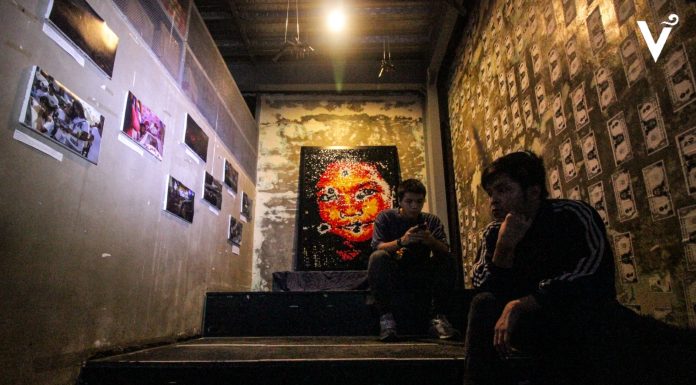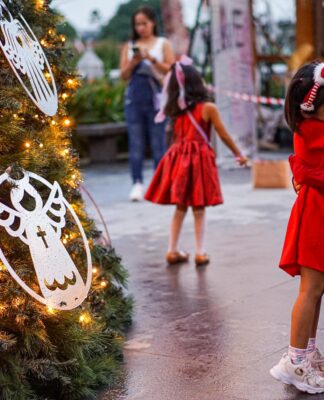MANY Filipinos show their faith through their unwavering devotion to the Black Nazarene. Jostling for space amid the crowd of millions just to get a glimpse of the much-revered image has become a yearly sight.
Last Jan. 9, an estimated eight million devotees went to the feast of the “translation” of the Black Nazarene, whose miracles have streaked across time and space, people, and age.
There are myriad reasons why Filipinos keep their faith on the image, and Msgr. Jose Ignacio, parish priest of St. John the Baptist Church (commonly known as Minor Basilica of Jesus the Black Nazarene) enumerated some of these.
“Maraming dahilan na ina-attribute like of the sociologists, psychologists, pastors pero sa akin kasi, si Kristo ‘yung gumagawa ng paraan para palakasin ‘yung debosyon,” Ignacio said. “Nararanasan ng mga tao na this devotion is powerful at nagkakaroon ng mga milagro.”
Ignacio said the black color of the Nazarene, the image of its sufferings and the miracles and answered prayers, have long roused millions of people to become devotees.
“The devotion is because of God. May dahilan ang Diyos kung bakit ito nangyayari at ang Diyos ang kumikilos sa buhay ng mga tao,” Ignacio said. “There are people who are being called by the Black Nazarene in their dreams. If you pray together, miracles happen.”
Ignacio noted that through the years, the number of devotees has grown because of the Nazarene’s miracles.
“Devotees usually come back because of the answered prayers, miracles they received, or if they have a petition. They are showing their devotions out of gratitude. And this devotion has been passed through generations,” Ignacio said.
Jan. 9 is not really the feast of the Black Nazarene; in fact, its real feast is on Good Friday. What the devotees celebrate every Jan. 9 is the “Translacion” or the transfer of the image from Luneta to Quiapo.
It was the procession’s fourth year in Luneta because the committee wanted to go back to the real reason of the “Translacion.”
“’Translacion’ is transferring from one place to the other. Mas nami-minimize ‘yung nasasaktan kapag sa Luneta nanggagaling yung prusisyon. Dito kasi sa Quiapo ay masikip na. Karaniwan kasi naiipit yung mga tao sa Plaza Miranda,” Ignacio said.
The procession usually takes only ten hours, but this year it lasted for 23 hours after the andas (gilded carro) that carried the image had four of its tires broken, making this year’s feast the longest in the history of the annual tradition.
Deeper devotion
With the theme, “Espiritu ng Ama at ng Panginoong Hesus Nazareno–Sambayanang Pilipino, Ibangon po Ninyo,” the 405th annual feast was a continuation of the three-year reflection on catechetical topics that aim to deepen the Filipino devotion to the Black Nazarene.
In his homily at the Quirino Grandstand, the newly installed Manila Archbishop Luis Antonio Tagle said Jesus the Black Nazarene imparts on us the Holy Spirit.
“Ibubuhos sa atin ni Hesus Nazareno, hindi basta tubig kundi Espiritu Santo. ‘Yung iba ‘pag bininyagan, inilulublob sa tubig, si Hesus ay ilulublob tayo sa Espiritu Santo sa buhay ng Diyos,” Tagle said.
He noted that the strength from God given to Jesus the Black Nazarene is shared by every devotee.
“Sabi ng tradisyon, ang imahen ng Hesus Nazareno ay si Hesus na tumatayo, bumabangon pagkatapos niyang malugmok sa bigat ng Krus. Siya ay larawan ng nadapa ngunit bumabangon. Ang lakas na galing sa Diyos, tinanggap niya, ibibigay niya,” he said.
Timeless history
The life-sized image, which is believed by many to have made miracles and cured illnesses, was sculpted by an Aztec man. The image was brought to Manila from Mexico by a Galleon. However, the exact year when the image arrived in the country has yet to be determined by historians.
When the image reached Manila in the 17th century, it was first housed in Bagumbayan (now Luneta Park) by the Augustinian Recollect friars together with the image of St. John the Baptist.
In 1608, the image was transferred to San Nicolas de Tolentino Church under the supervision of the Franciscans.
Through the initiative of then Manila Archbishop Basilio Sanco Junta y Rufina, the image was transferred to Quiapo. The image became as the Black Nazarene after it was charred by fire in Quiapo Church in 1791 and 1929.
In 1945, at the height of the World War II, the image also survived a bombing.















